How to Choose, Configure and Reduce the Cost of UPS?
Dec 09,2024
Schneider electric The white paper "How to Choose, Configure and Reduce the Cost of UPS" released a few days ago provides users with more choices when choosing UPS and configuring architecture. The article points out that due to the challenges of increasing IT equipment, increasing power consumption, shortage of computer room space, and demand for energy saving and consumption reduction, users should focus on many factors such as applicability, reliability and availability, energy saving and emission reduction, operation and maintenance management, and cost when choosing UPS.
Select the applicable UPS according to the demand.
With the maturity and progress of UPS technology, the industry manufacturers Developed and provided low frequency models, high frequency models, modular models and special industry Models. Users can choose the suitable model according to their own needs.
Selection of single-phase or three-phase UPS
According to the load to be protected by UPS and the voltage range or power value of equipment, it can be determined whether single-phase or three-phase UPS is needed. Generally, a single-phase UPS can be used for a load of 20kVA or less, while a three-phase UPS is needed for a load with higher power.
If you decide to use three-phase UPS, then you need to decide whether to use three-phase input/single-phase output configuration or three-phase input/three-phase output configuration? This is related to the load type. IT equipment such as servers in data centers usually use single-phase power supply, and medical equipment such as magnetic resonance imaging system (MRI) or large factory workshop machines may use three-phase power supply.
In the case of three-phase input/three-phase output UPS, the problem of load balancing will be very difficult. For example, in oil and gas industries, we don't want to spend more energy to deal with the problem of load balance, so we usually choose three-phase input/single-phase output UPS.
On the other hand, the advantage of using three-phase input/three-phase output is that centralized power protection scheme can be adopted, and a large UPS can be used to protect the whole building or a group of key circuits. In this sense, the user's power protection scheme can be simplified.
How to determine UPS and battery capacity 1
Capacity of UPS
The UPS capacity is determined according to the energy consumption of the protected load. The relationship between the basic capacity E of UPS and the load energy consumption P is as follows: When E≥1.2P, it should be considered that it should not exceed 60% to 70% of its rated capacity during operation. For the sake of safety and future expansion, 40% to 50% is actually more common.
Capacity of battery
The calculation of battery capacity can be constant.electric currentMethod or constant power method for calculation.
A rough estimate algorithm As follows:
UPS power (VA)× backup time (h)÷UPS starting DC voltage (V)= battery capacity (Ah)
Selection of backup time
When the power supply is interrupted, the length of backup time required by customers depends on whether there is a generator on site. If there is a generator on site, the customer only needs a delay of one or two minutes to supply power to the load before the generator starts. If there is no generator on site, UPS will supply power to the load alone, and it is necessary to determine how long it will take the customer.
Choice of function
The functions of UPS power supply system are very important for the operation and maintenance management of the system. The functions concerned by users mainly include: remote management, automatic shutdown, redundancy, power failure notification, battery replacement warning, environmental monitoring, status display, event log and so on.
Configuration of power supply architecture for UPS
According to the increasing reliability, the five power supply architectures of UPS are configured as follows:
Full capacity or n design
N system includes a single UPS or a group of UPS, and its capacity matches the critical load capacity.
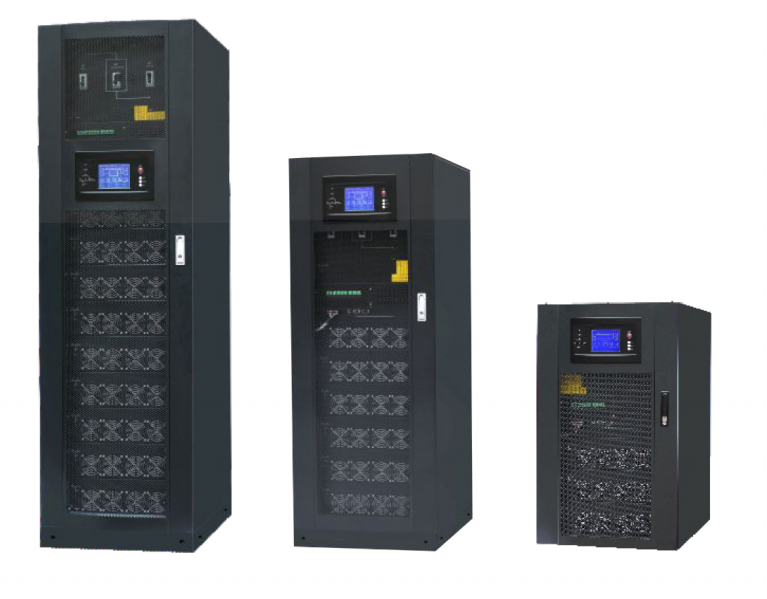
N The disadvantage of redundant configuration is that the load may not be protected if there is a problem with UPS. Especially in three-phase UBP with multiple modules, this structure brings the risk of multiple single points of failure.
Series redundancy
Through isolated redundant configuration, the main UPS usually supplies power to the load, while the second-level UPS supplies power to the static bypass of the main UPS, as shown in Figure 2. This requires the main UPS to have a separate input for static fibrechannel. If the load carried by the main UPS is switched to static bypass, the second-stage UPS will immediately carry all the load instead of transferring it to the mains loop. This design provides a method to increase redundancy without completely replacing the existing UPS. However, its complexity is greatly improved, more devices are added, and new failure risks are introduced, which leads to lower reliability.
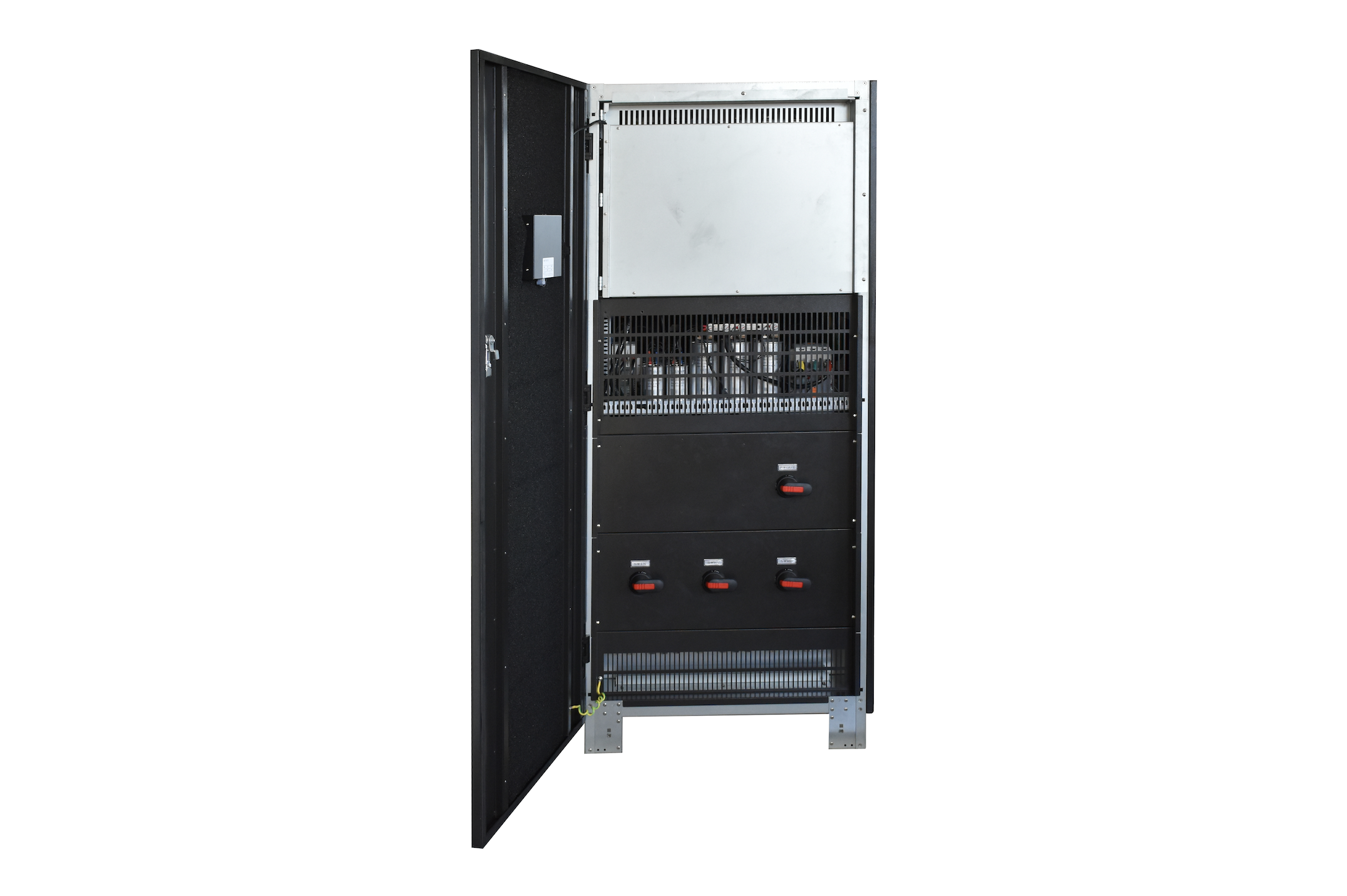
Parallel redundancy (N+1)
The parallel redundancy configuration consists of multiple UPS with the same capacity running in parallel and providing a common output bus. If the capacity of "standby" UPS is at least equal to that of one UPS, the system is considered as N+1 redundancy, as shown in Figure 3. Compared with the series redundant structure, the failure probability is lower because all UPS are always on-line. This is also a simpler and more cost-effective structure.
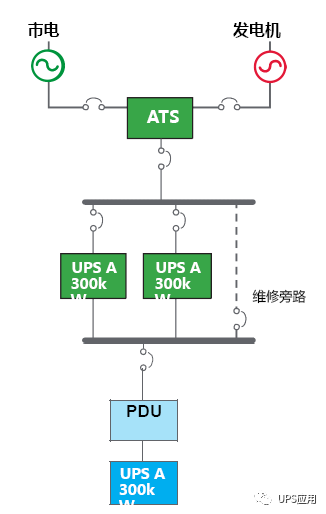
Distributed redundancy
Distributed redundancy design was developed in the late 1990s to provide fully redundant capability without increasing related costs. This design is usually used in large data centers, especially financial institutions. This design will use three or more UPS with independent input and output feeders. The output bus is connected to the critical load through multiple PDUs, and in some cases, it is also connected to the static transfer switch (STS). STS has two inputs and one output. It usually accepts power from two different UPS and provides power from one UPS to the load. If the main UPS fails, STS will switch the load to the auxiliary UPS in about 4 to 8 milliseconds, thus always providing power protection for the load.
This scheme is inefficient because UPS usually runs far below full load. As shown in figure 4.
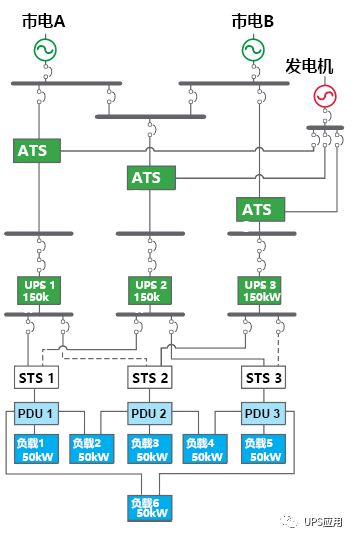
System+System (2N,2N+1)
The "system+system" model is recognized as the most reliable design in the industry. This design can form a UPS system that may never need to switch the load to the mains, because this design aims to eliminate all possible single points of failure.
Like the distributed redundancy scheme, there are many options for how to configure the system+system model, which also includes a variety of architectures, including: serial parallel, multi-parallel bus, double-ended system, 2(N+1), 2N+2, [(N+1)+(N+1)] and 2N. According to the needs of users, its architecture design may be simple or very complicated.
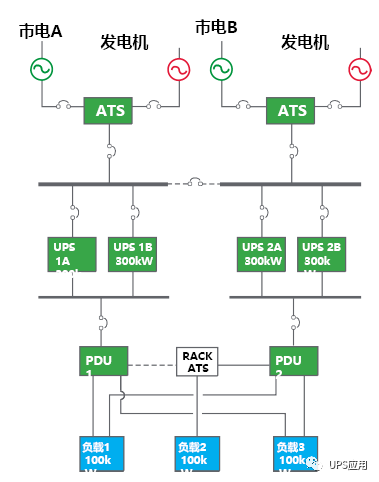
This design needs two power supplies to support all critical loads, and realizes complete redundancy from the entry end to the end of the system, that is, the critical load end.
Undoubtedly, due to the number of redundant components and its low level of energy efficiency, the system design of system+system has the highest cost among the five systems. But considering the importance of the load it protects, the high cost of this design is reasonable. In fact, many large enterprises use this design to protect their critical loads.
Concluding remarks
To sum up, the following suggestions are put forward:
When selecting and configuring UPS and its power supply architecture, don't excessively pursue reducing the pre-construction cost, but purchase the famous Manufacturers' UPS and batteries,like huawei,Emerson,APC or EATON,should the budget is limited you can also choose some qualified manufacture like ZLPOWER that is not so famous but price is less and also they can offer you customization. We should focus on reducing the later operation and management costs and recover the investment in the early construction as soon as possible;
lithium batteryThe research, development and application of lithium battery have become the technical trend in the industry, so we should pay full attention to the safety of lithium battery in the field of power or energy storage.
With the continuous development of modern power technology, the requirements for power supply quality are also significantly improved, withelectronWith the progress and development of devices and technologies, UPS has been strengthened and improved in control, structure and management system. As long as users fully understand the technical characteristics and system solutions of various brands according to their own needs, they will certainly be able to choose the most suitable UPS and power supply architecture.
Prev
More News
Subscribe
Check the latest news of our company anytime and anywhere.
Contact ZLPOWER

1-2 Floor, Building E, Liyukeng Industrial Zone, Beihuan Road, Shangwu Community,Shiyan Street, Bao'an District, Shenzhen,Guangdong, China









